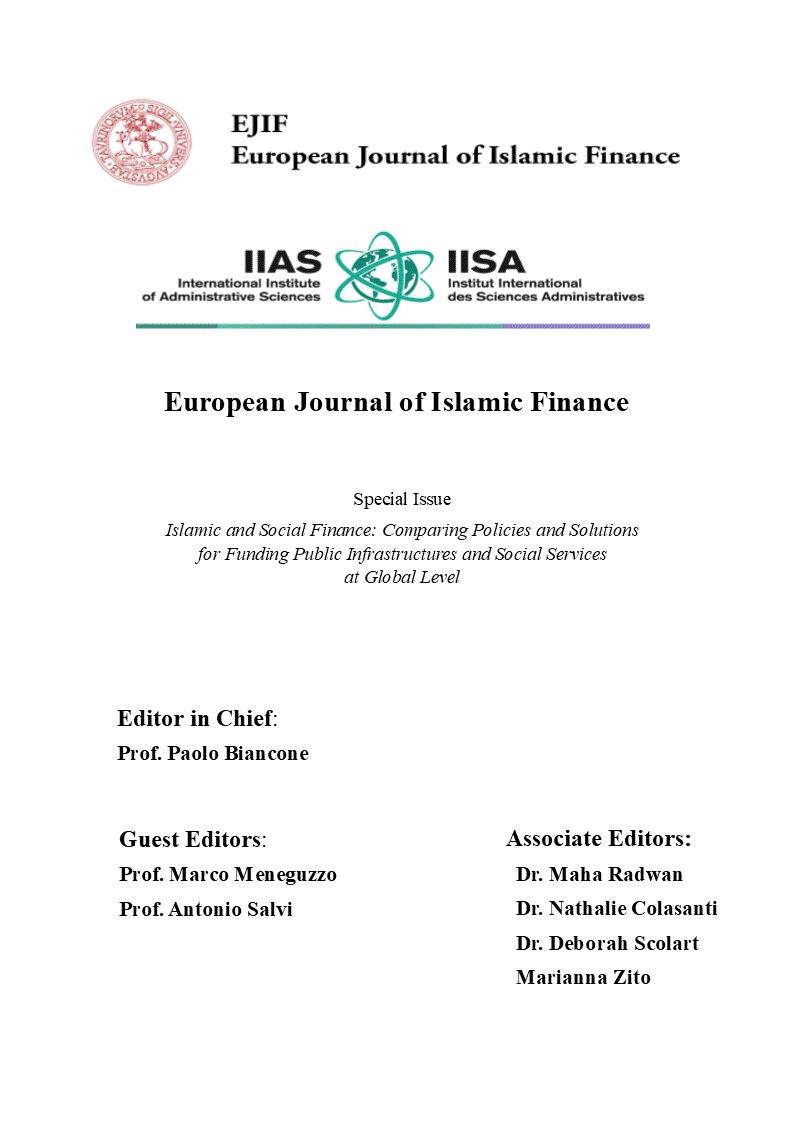The challenge of Social Impact Bond: the state of the art of the Italian context
DOI:
https://doi.org/10.13135/2421-2172/3038Keywords:
, Social Impact Bond, PA, Italian context, Social FinanceAbstract
This paper aims to investigate Social Impact Bond (SIB), as a specific social finance tool able to involve various stakeholder groups in generating social value. The theoretical framework is the study of the outcome-based commissiong models of Anglo-Saxon origin and rapidly spread throughout Europe.
The research question concerns the main opportunities and challenges posed by the SIBs in the perspective of Italian public decision-makers. The results of the research consist in clustering of the various roles that the PA can assume in an SIB and in the analysis of the strengths and weaknesses of the Italian context with respect to the development of this tool.
References
Alford, J., & O'flynn, J. (2012). Rethinking public service delivery: Managing with external providers. Palgrave Macmillan.
Bales, R.F. (1950). Interaction Process Analysis, a method for the study of small groups. Reading, Mass.: Addison-Wesley.
Belinsky, M., Eddy, M., Lohmann, J. and G. Michael (2014). “The application of Social Impact Bonds to universal health- care initiatives in South-East Asia”. WHO South- East Asia Journal of Public Health, Vol. 3/3-4, pp. 219- 225.
Borgonovi, E., & Mussari, R. (2011). Pubblico e privato: armonizzare gli opposti.
Bozeman, B. (2007). Public Value and Public Interest. Counterbalancing Economic Individualism. Washington, DC: Georgetown University Press.
Brandsen, T., & Honingh, M. (2016). Distinguishing different types of coproduction: A conceptual analysis based on the classical definitions. Public Administration Review, 76(3), 427-435.
Brown, A. and A. Swersky (2012). “The First Billion: A forecast of social investment demand”, Boston Consulting Group, London, September.
Burand, D. (2013). Globalising Social Finance: “How Social Impact Bonds and Social Impact Performance Guarantees can Scale Development”, Journal of Law & Business, Vol. 2013/9, pp. 447-502.
Corbetta, P. (1999). “Metodologia e tecniche della ricerca sociale”, Collana Strumenti, Il Mulino.
Disley, E. and Rubin, J. (2014). Phase 2 report from the payment by results Social Impact Bond pilot at HMP Peterborough. London: Ministry of Justice.
Disley, E., Rubin, J., Scraggs, E., Burrowes, N. and D., Culley (2011). Lessons learned from the planning and early implementation of the Social Impact Bond at HMP Peterborough. London: Ministry of Justice.
Gustafsson-Wright, E., Gardiner, S. and V. Putcha (2015). Potential and Limitations of Impact Bonds.
Kohli, J., Golden, M., Coletti, J. and L. Bo’sher (2015), From Cashable Savings to Public Value: Pricing Program Outcomes in Pay for Success, Center for American Progress, Lessons from the First Five Years of Experience Worldwide, Global Economy and Development.
Mazzuccato M., Rediscovering public wealth creation, Live Mint – e-paper- 1st January 2018.
Meneguzzo M., Rebora G. (1990). Strategia Delle Amministrazioni Pubbliche, Utet, Torino.
Milbourne L. & Cushman M. (2012). From the Third Sector to the Big Society: how changing UK government policies have eroded third sector trust. Voluntas.
Mintzberg H. (2015). Rebalancing Society. Radical renewal beyond left, right, and center. Common access on www.mintzberg.org
Murray R., Caulier-Grice J., Mulgan G. (2010). The Open Book of Social Innovation. London, NESTA-The Young Foundation.
OECD (2014a). Social Impact Investment: Building the Evidence Base, Paris: OECD Publishing.
OECD (2016). Understanding social impact bonds, working paper, the OECD LEED Programme.
OECD (2017). Government at Glance. http://www.oecd.org/gov/govataglance.htm
OECD netFWD (2014b). Venture Philanthropy in Development: Dynamics, Challenges and Lessons in the Search for Greater Impact, OECD Development Centre, Paris.
OECD/European Union (2015).Policy Brief on Social Impact Measurement for Social Enterprises: Office of the European Union, Policies for Social Entrepreneurship, OECD/European Commission, Luxembourg: Publications Program, Brookings Institution.
Pestoff, V. A., Brandsen, T., & Verschuere, B. (2012). New Public Governance, Co-Production and the Third Sector.
Roy M. J., McHugh N., Sinclair S., (2018). A Critical Reflection on Social Impact Bonds, in Standford Social Innovation Review, May 2018.
Social Finance (2012). A New Tool for Scaling Impact: How Social Impact Bonds can Mobilise Private Capital to Advance Social Good.
Wilson, K. E. (2014). “New Investment Approaches for Addressing Social and Economic Challenges”, OECD Science, Technology and Industry Policy Papers, No. 15, OECD Publishing.
Downloads
Published
How to Cite
Issue
Section
License
EJIF content is licensed under a Creative Commons Attribution 4.0 International License.
Authors keep the copyrights for their work and give the journal the work's first publication copyright, which is at the same time licensed under a Creative Commons License – Attribution, which in turn allows other parties to share the work with an acknowledgement of the work's authorship and initial publication in this journal.


 EJIF has been approved for inclusion in
EJIF has been approved for inclusion in  EJIF has been approved for inclusion in
EJIF has been approved for inclusion in  EJIF is a member of
EJIF is a member of  EJIF is listed in the ANVUR (Italian National Agency for the Evaluation of Universities and Research Institutes) as a scientific journal in both
EJIF is listed in the ANVUR (Italian National Agency for the Evaluation of Universities and Research Institutes) as a scientific journal in both 
